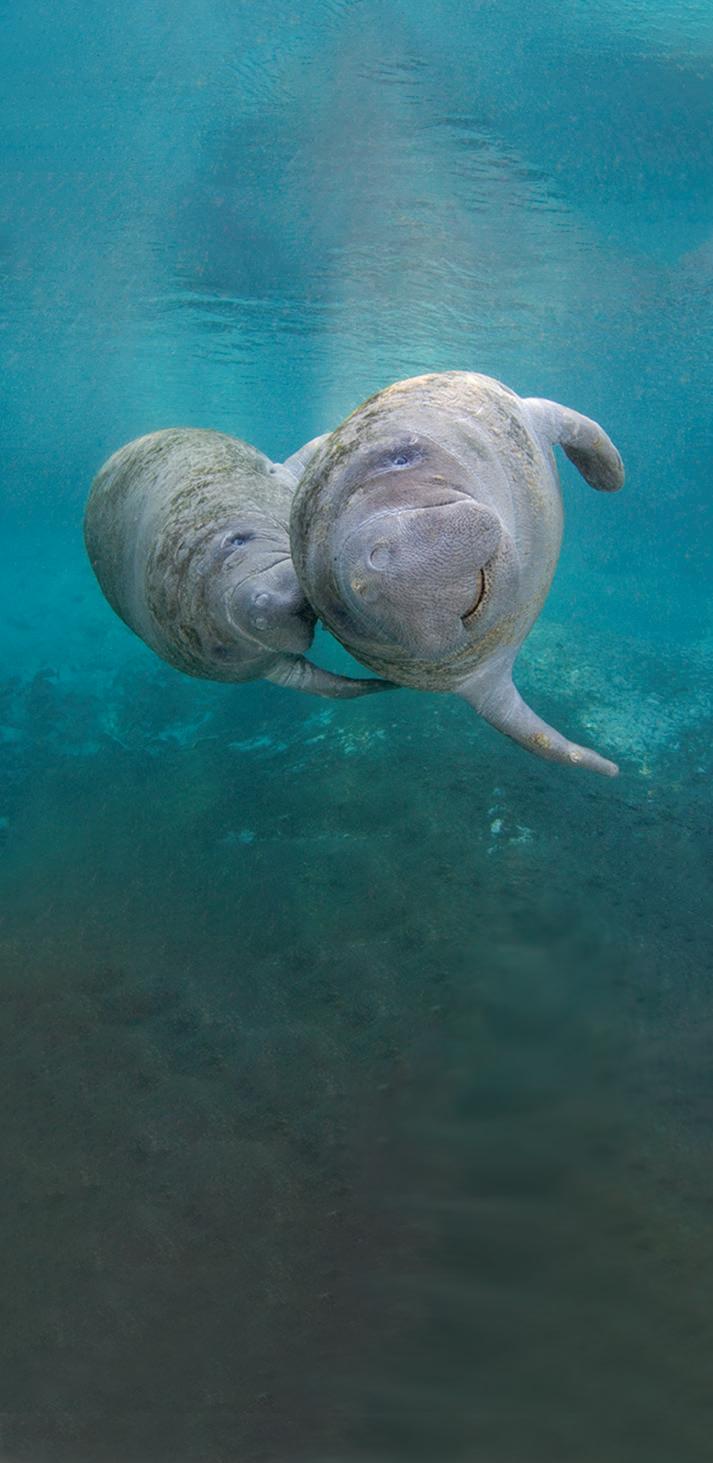
5 minute read
NATURE TO THE RESCUE
Kids Come Alive Outdoors
by Ronica O’Hara
Advertisement
image courtesy of Meraiko
As Angela Hanscom of Barrington, New Hampshire, watched her preschool daughters at play, she realized that a surprising number of their friends had problems with balance, coordination and muscle weakness, conditions she was attuned to as a pediatric occupational therapist. Teachers told her that compared to past years, young children were falling out of chairs and bumping into each other and walls more often—all evidence of poor proprioceptive skills, the “sixth sense” ability to feel and position the body in space.
Hanscom also realized that almost none of the children played outdoors, which “fascinated and scared” her. Nationwide, even before the lockdowns and online schooling brought on by the pandemic, the average child spent seven hours per day looking at screens and only seven minutes per day playing freely outdoors. Recent studies show that today’s children have poorer hand grip strength, slower running speeds and lower cardiovascular fitness levels than previous generations. Meanwhile, a growing body of research finds that spending time in nature makes kids happier, healthier and more functional.
Hanscom’s solution was to establish TimberNook, camps in which children from 18 months to 14 years of age are encouraged to explore natural settings in imaginative, largely unstructured, minimally supervised play. Now in its eighth year, 38 TimberNook-affiliated camps are located in the U.S., Canada, the UK and Australia. Hanscom’s book, Balanced and Barefoot: How Unrestricted Outdoor Play Makes for Strong, Confident, and Capable Children, has garnered more than 300 fivestar reviews on Amazon.com.
“Children thrive physically, mentally and emotionally when they are given frequent outdoor play experiences, especially with other children. When children do not get enough of these opportunities, it comes at a great cost to their development,” she says.
Journalist Richard Louv, author of the seminal Last Child in the Woods, agrees. “The scientists who study the human senses no longer talk about five senses, they list conservatively nine or 10, and some believe that humans have as many as 30 senses,” he says. “Yet today, children and adults who work and learn in a dominating digital environment expend enormous energy blocking out many of the human senses—including ones we don’t even know we have—to focus narrowly on the screen in front of the eyes. That’s the very definition of being less alive. What parent wants his or her child to be less alive? Who among us wants to be less alive?”
That dawning realization is motivating parents and teachers to find ways to get their children actively involved with nature in ways that open their senses while also moving their bodies. This often means hitting the local trails and nature preserves, sometimes with binoculars, bug jars, bird and plant guides and a
scavenger list in hand. “‘Hiking’ can be a bit of a drag to young children, but ‘exploring’ (while still hiking) helps open their minds to the beauty and wonder of the outdoors,” says Tanya Gray of Woodstock, Georgia, a homeschooling blogger at TwoPineAdventure.com.
To improve kids’ hearing, Lilach Saperstein, an Israeli audiologist who hosts the podcast All About Audiology, asks children to close their eyes and describe only what they hear. “The wind, the rustle of leaves, a running water stream, crickets, birds, their own breathing, the swish of their sleeve or pant—this is a great way to introduce mindfulness, as well.”
To awaken sight, sound and smell, Boston plein air artist Diana Stelin hands kids paper and art supplies out in nature. “Allowing kids to sit with sounds around them and with smells of various seasons makes them truly feel part of our grand universe. It also allows their minds to quiet down and reset, making them pay more attention to detail, to their inner landscapes and to people around them.”
To engage the sense of taste, Malorie Thompson, editor of TheVeganInsider.com, takes her children foraging for edible plants on treasure hunts on a trail or around their Northern California neighborhood. She says, “Bonus activity: use the foraged food to make a meal afterward!”
Most of all, nature should be both physical and fun. “Point excitedly at the full moon, shout at it and say hello. Pick up leaves and chestnuts and rocks and create beautiful art together. Stop to smell the twigs and flowers and roll on the grass—who can make it faster down the hill? Make sandcastles and animals. Tie colorful ribbons on tree branches. Look for the shapes of animals in the clouds,” says Milana Perepyolkina, of Salt Lake City, who wrote about forest bathing in Gypsy Energy Secrets.
“The only way to get your children to be excited about nature is for you to be excited about nature first,” she notes.
Health writer Ronica O’Hara can be reached at OHaraRonica@gmail.com.
Family Time in the Woods
Richard Louv, a prominent nature writer and a co-founder of The Children & Nature Network (C&NN), offers 500 ways for families and communities to connect to the natural world in his book Vitamin N: The Essential Guide to a Nature-Rich Life. Here are more wise words.
Be a hummingbird parent. One parent says, “In the range from helicopter to neglect—I probably fall a bit more toward helicopter. In fact, I call myself a hummingbird parent. I tend to stay physically distant to let them explore and problem-solve, but zoom in at moments when safety is an issue (which isn’t very often).” Notice that she isn’t hovering over her kids with nature flash cards. She stands back and makes space for independent nature play—albeit not as free as she experienced as a child; this play is important, nonetheless. Create or join a family nature club. Nature clubs for families are beginning to catch on across the country; some have membership lists of 400-plus families. The idea is that multiple families meet to go for a hike, garden together or even do stream reclamation. We hear from family nature club leaders that when families get together, the kids tend to play more creatively—with other kids or independently—than during singlefamily outings. C&NN’s Nature Clubs for Families offers a free downloadable guide on how to start your own. Get the safety information you need. Become familiar with good resources for safety tips in the outdoors, including those with information on how to guard against ticks. Check out the Centers for Disease Control and Prevention’s cdc.gov. AudubonPortland.org offers tips on living with a variety of urban wildlife. Virtual Gatherings Continue


Sunday at 11 am
via FaceBook www.facebook.com/CSLCulturalCoast or YouTube Live Our Channel is CSL Cultural Coast Thursday Meditation
6:30 pm via Zoom*
*signup for e-newsletter to receive links CSLCulturalCoast.org Email: Info@CSLCulturalCoast.org Info@CSLCulturalCoast.org
Rev. Theresa Fieberts
Spring Into Action!
Adopt -AManatee®
1-800-432-JOIN (5646) savethemanatee.org
Photo © David Schrichte









